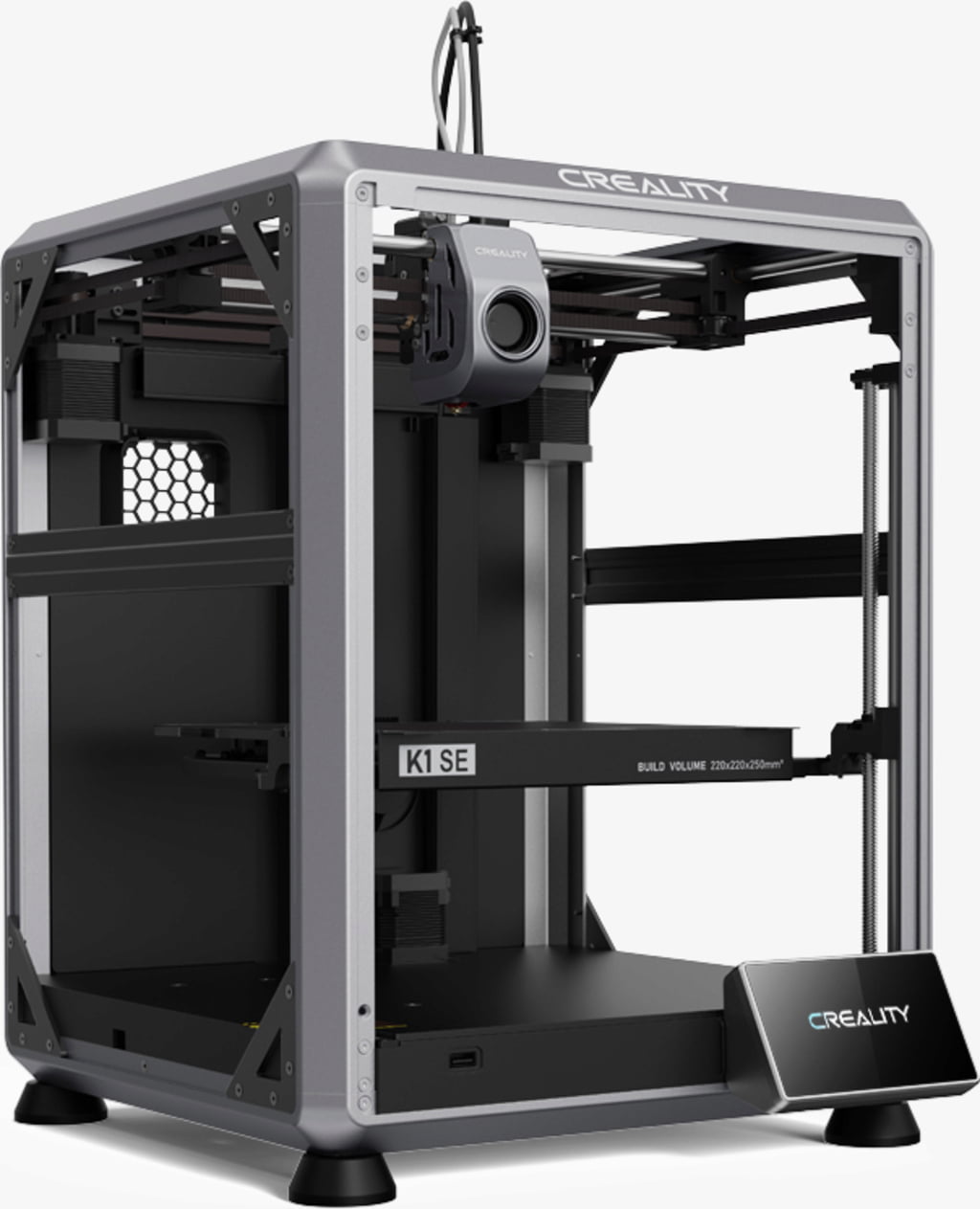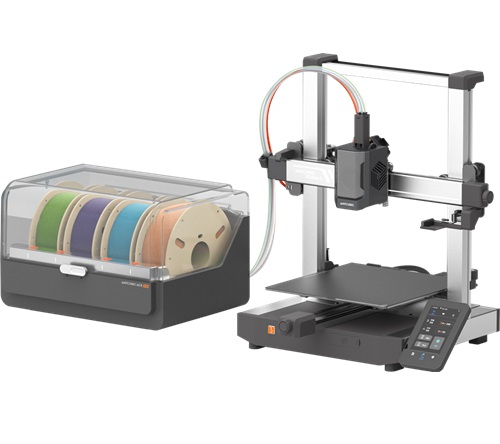Compare K1 SE vs Kobra 3 Combo
Comparison between the best 3D printers
Choose the best 3D printer at the best price. The cheapest 3D printers are here.
Buy a 3D printer here with 3D Fila.
 |
 |
|
| Model | K1 SE |
Kobra 3 Combo[BUY Kobra 3 Combo] |
| Printing Material | Filament | Filament |
| Buy Filament for Creality 3D K1 SE | Buy Filament forAnycubic Kobra 3 Combo | |
| Estimated price | $349,00 | $349,00 |
| Manufacturer | Creality 3D | Anycubic |
| Release Year | 2023 | 2024 |
| Print Volume [mm] | 220x220x250 | 250x250x260 |
| Printer Size [mm] | 355x355x480 | 452x504x483 |
| Weight [kg] | 10,24 | 9,2 |
| Power Loss Recovery | YES | YES |
| Enclosed printer | NO | NO |
| Bed Leveling | Automatic | Automatic |
| Filament End Sensor | YES | YES |
| Bed type | Heated | Heated |
| Power supply system | Direct Drive | Direct Drive |
| Standard nozzle | 0,4 | 0,4 |
| Maximum Nozzle Temperature [°C] | 300 | 300 |
| Maximum Bed Temperature [°C] | 100 | 110 |
| Maximum printing speed [mm/s] | 600 | 600 |
| Filament holder | YES | YES |
| Camera for supervision | YES | YES |
| Recommended filaments | Hyper PLA, PLA, PETG, PET, TPU | PLA, PETG, ABS, PP, HIPS |
| Recommended slicers | Creality Print; Cura, Simplify3D e PrusaSlicer | Anycubic Slicer, Cura, Orca Slicer |
| Maximum Resolution [mm] | 0,1 | 0,1 |
| Processor | 32 bits | |
| Display | Display touchscreen 4,3'' | Touchscreen 4,3'' |
| Power Supply | 110/220V / 350W | 400 W |
| Connectivity | Ethernet / USB / Wi-Fi | USB, Wi-Fi, Cloud |
| Operating systems | Windows, Mac, Linux | Windows, Linux, Macbook |
| Date of registration in the system | 2023-08-26 | 2024-06-27 |
| Release date | 2023 | 2024 |
| Extra features | The Creality K1 SE is a high-speed 3D printer with CoreXY system, capable of printing at up to 600mm/s with acceleration of 20000mm/s². It has a dual-gear extruder, easy-to-replace tri-metal nozzle, automatic leveling, and advanced features such as vibration reduction algorithms and intelligent operation. Its rigid cast aluminum frame ensures stability, while the open-source Klipper-based system offers freedom for customization. It is pre-assembled for a simplified and fast user experience. | The Anycubic Kobra 3 Combo offers advanced features, including multi-filament printing with the ACE (Anycubic Color Engine) system, allowing for quick switching of up to four filaments. It features automatic bed leveling, nozzle clogging detection, and integrated filament drying during printing. The printer supports technical materials such as ABS, ASA, Nylon, and PC, thanks to the hotend that reaches 300°C and the heated bed up to 110°C. In addition, it has a 4.3-inch touchscreen and compatibility with various slicers such as Anycubic Slicer, Cura, and Orca Slicer. |
| Support for multiple colors and materials (AMS and CFS) | NO | YES |
Notes * |
||
| Cost-benefit | 7 / 10 | 8 / 10 |
| Hardware | 3.5 / 10 | 4 / 10 |
| Tela | . | . |
| Print volume | 3 / 10 | 4 / 10 |
| Performance | 5 / 10 | 5 / 10 |
| [BUY Kobra 3 Combo] |
Conclusion |
| In comparing the Creality K1 SE and the Anycubic Kobra 3 Combo, both 3D printers offer robust features and capabilities, but they cater to slightly different user needs and preferences. The Creality K1 SE stands out with its high-speed printing capabilities, enabling rapid production without compromising on quality. Its lightweight design and portable size make it suitable for users who prioritize efficiency and performance, especially in environments where space is limited. The printer also offers a flexible filament choice, making it ideal for various applications. On the other hand, the Anycubic Kobra 3 Combo provides an advanced multi-filament printing system, allowing users to switch between up to four different materials with ease. Its support for a wider array of filaments, such as ABS and Nylon, coupled with features like integrated filament drying, makes it a preferable option for users requiring versatility in material usage. While both printers are competitively priced and share similar performance specifications, the Kobra 3 Combo offers enhanced functionality for those who need to work with a broader range of materials and colors. In contrast, the K1 SE's focus on speed and ease of use may appeal to users looking for efficiency in simpler projects. Ultimately, the choice between the two will largely depend on whether the user prioritizes rapid print speeds with fewer material options or the ability to work with diverse filament types for more complex and varied projects. |

